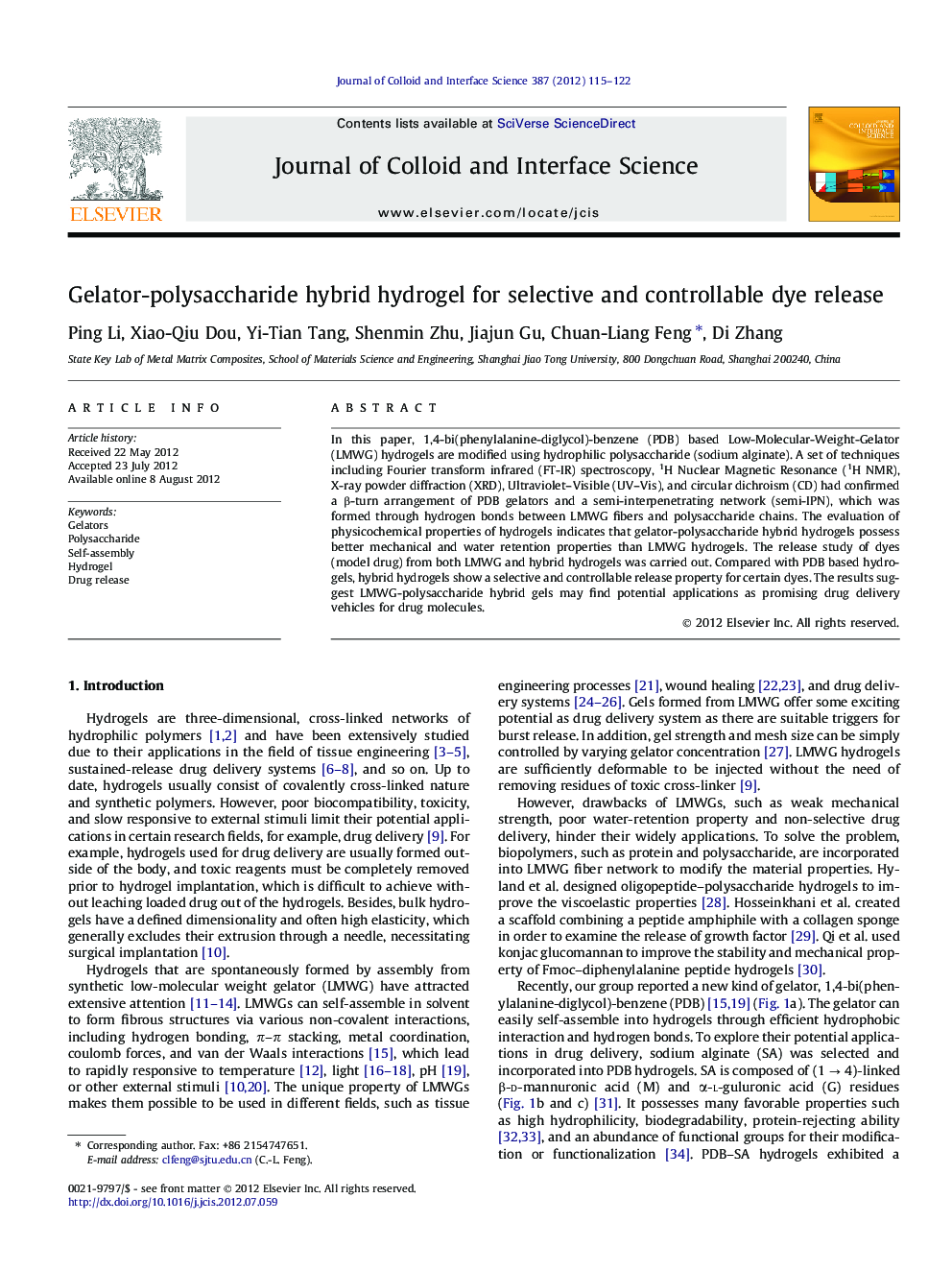| کد مقاله | کد نشریه | سال انتشار | مقاله انگلیسی | نسخه تمام متن |
|---|---|---|---|---|
| 608212 | 880573 | 2012 | 8 صفحه PDF | دانلود رایگان |

In this paper, 1,4-bi(phenylalanine-diglycol)-benzene (PDB) based Low-Molecular-Weight-Gelator (LMWG) hydrogels are modified using hydrophilic polysaccharide (sodium alginate). A set of techniques including Fourier transform infrared (FT-IR) spectroscopy, 1H Nuclear Magnetic Resonance (1H NMR), X-ray powder diffraction (XRD), Ultraviolet–Visible (UV–Vis), and circular dichroism (CD) had confirmed a β-turn arrangement of PDB gelators and a semi-interpenetrating network (semi-IPN), which was formed through hydrogen bonds between LMWG fibers and polysaccharide chains. The evaluation of physicochemical properties of hydrogels indicates that gelator-polysaccharide hybrid hydrogels possess better mechanical and water retention properties than LMWG hydrogels. The release study of dyes (model drug) from both LMWG and hybrid hydrogels was carried out. Compared with PDB based hydrogels, hybrid hydrogels show a selective and controllable release property for certain dyes. The results suggest LMWG-polysaccharide hybrid gels may find potential applications as promising drug delivery vehicles for drug molecules.
Figure optionsDownload high-quality image (94 K)Download as PowerPoint slideHighlights
► Hybrid hydrogel consisted of C2-symmetric benzene-based gelator and alginate.
► Hybrid hydrogels have favorable mechanical and water retention properties.
► Hybrid hydrogels show controlled and sustained release property for certain dyes.
► Hybrid hydrogels were selective for different dyes release.
Journal: Journal of Colloid and Interface Science - Volume 387, Issue 1, 1 December 2012, Pages 115–122